Why Amazon wins | Innovate the core, innovate to transform
September 2, 2015 Leave a comment
Take a look at your organization’s innovation projects. Are you strategically balancing your efforts between the core business and future growth areas?
In advising companies about innovation, an area I stress is the value of consciously pursuing both little and BIG innovation. Often, companies pursuing innovation can be categorized as either:
- Seeking small innovations such as operational improvements and existing product enhancements
- Swinging for the fences to find unique, breakthrough ideas in new markets
In both cases, such myopia limits the value of innovation, focusing too low (incrementalism) or too high (core business withers from neglect). Companies do well to take a holistic look at their innovation efforts, understanding their portfolio of initiatives in the context of both small and big projects.
To understand the value of this approach, let’s examine Amazon’s innovation portfolio. Why? Their efforts are visible, and they’ve got the results to back up their innovation approach:
Amazon’s stock performance is no fluke. They’ve done a fabulous job mixing their innovation efforts. They have significantly improved their core, while moving into adjacent and unfamiliar ground.
Segmenting Innovation Efforts
To begin with, it’s useful to divide innovation efforts according to their level of familiarity:
Why use familiarity as the basis of segmenting? Because familiarity manifests itself in two ways when it comes to innovation:
Institutional advantage: Companies are awash in information about current operations. Product or service features, with their strengths and weaknesses, are understood. How they’re delivered is understood. What customers like and what they want to see improved…are understood. This data rich environment makes it easier to focus on what is done today.
Personal advantage: Expertise in a given realm is why you hold your position. Executing on various initiatives related to current operations is how you’re assessed. Keeping your focus on that is a natural outcome, but one that can stymie interest in exploring new areas.
Moving outside the realm of familiarity is tough. Yet that’s where growth for the company will be found. So it takes a conscious effort to step outside the world we know, assess opportunities and try new things. Much of the organization is not geared to do this.
The matrix above characterizes innovation efforts as three types:
- Sustain: Innovations that maintain and even grow the core business. While this type of innovation is often dismissed as inconsequential, that;s not true at all. We’ll see that in a moment with amazon.
- Expand: Innovations that are adjacent to an organization’s current operations. That can be extending current offerings into new markets, or introducing new products and services to existing customers.
- Transform: Innovations here have the effect of changing the identity of the company. To be successful in these new markets, the new offerings are substantially better at satisfying existing jobs-to-be-done for customers.
To show the diversity and power of innovations representing each of these types, let’s look at how Amazon’s innovation have fit this model.
Amazon Innovations by Type
One of the more valuable aspects of the Amazon story is that it highlights the value of innovating for core operations as well as entering new arenas. The matrix below maps several Amazon innovations against the different types:
Sustain
Think sustaining innovation can’t make a difference? Then check out Amazon’s results here.
Collaborative filtering recommendations are those suggested products that display when you’re viewing an item. Collaborative filtering is based on product categories and “people who bought this also bought that”. At one point in Amazon’s history, its recommendation engine was responsible for 35% of company revenues.
1-click checkout is Amazon’s patented innovation that dramatically reduce friction in the buying process. With a single click, your purchase is on its way. This is a significant improvement over the multi-field (even multi-page) process that other sites provided to purchase.
Drone delivery is a futuristic idea: have drones deliver goods within 30 minutes. Bypass the traffic on the roads. Even if it is of dubious potential, it’s a good example where sustaining innovations can be “radical” in the popular sense.
Prime originated as a way for customers to pay a single price for all-you-can-buy shipping. Customers were already paying for shipping on a per order basis; Prime made the shipping a single price, no matter how many transactions. As a sustaining innovation, it has delivered impressive results. Prime members are estimated to spend $1,500 per year vs. $625 for non-Prime customers.
Expand
The two flavors of expansion innovation vary in emphasis: new products and services vs. new customers. But they both are cases of extending what the company already does. The familiarity measure is less, but still meaningful.
Affiliate marketing is a normal web practice now. But Amazon was an early innovator here, although not the first. Through affiliate marketing, Amazon reached new customers with its existing offerings.
Kindle is Amazon’s reading tablet. People who own Kindles download the digital books, and are able to search text and annotate passages. Kindle was estimated to account for 10% of Amazon’s sales in 2012.
Amazon Fresh is a home delivery service for groceries. More than a decade after the failure of Webvan, Amazon is seeking to deliver a new category to customers: perishable groceries. This extends the offerings of Amazon’s existing retail selection, for both existing and new customers.
Transform
Amazon’s growth has included investing in transformative innovation, beyond its initial core business. The risk here is much higher, as the company moves beyond the familiarity of its core business and takes on new competitors.
Amazon Web Services offers cloud computing services to companies. Its origins come out of Amazon’s work to optimize its internal cloud operations. Jeff Bezos decided to turn that work into a new offering. Introduced in 2006, AWS has been a tremendous success. In the 2nd quarter of 2015, AWS generated a profit of $391 million on $1.82 billion in revenue. Even the super secret CIA is using AWS.
Prime is now Amazon’s vehicle for delivering original content programming. While its roots were in making buying products easier, Prime has become a wide range of offers. One of these is Amazon’s entry into the world of original programming, Amazon Studios. Its shows include Alpha House, Betas and Bosch. Oh, and these new content customers are converting to full Prime shoppers.
Fire Phone was Amazon’s entry into the smart phone market, taking on Apple’s iPhone, Samsung’s mobile phones and others. Fire Phone’s notable feature was its 3-D “Dynamic Perspective”. However, it failed to offer anything that delivered better outcomes on people’s jobs-to-be-done. Amazon has stopped its work on the Fire Phone.
Amazon: What a Strategic Innovation Portfolio Looks Like
Amazon provides a powerful example of how companies should approach their innovation portfolios. Despite claims that sustaining innovations are a recipe for mediocrity, Amazon has shown there’s plenty of value innovating on your core. What aids Amazon in this case is a clear mission, a sense of what they want to accomplish and a CEO who continually acts on it. Lack of such clarity and leadership is the cause of innovation failure for other companies; it’s not “getting bogged down in incremental innovation”. Note that Google also dedicates significant innovation effort towards its core business.
In the Transform quadrant, Amazon takes on bigger risks. This is the harder area. AWS has turned out to be a hit. Fire Phone was a failure. But the key is (i) understanding the risks of that quadrant; and (ii) making sure efforts there are part of a larger portfolio approach across different levels of familiarity.
What’s the right mix? That will vary by company and the health of its core business. The key is to understand why you’re making the innovation investments you are.
I’m @bhc3 on Twitter.

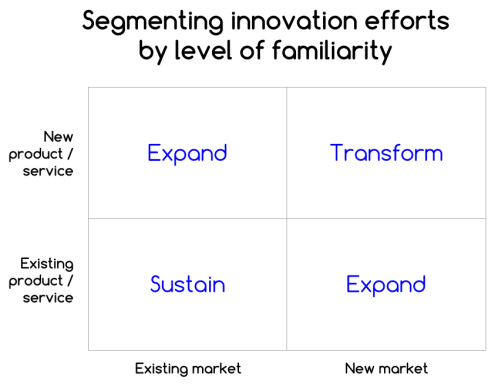

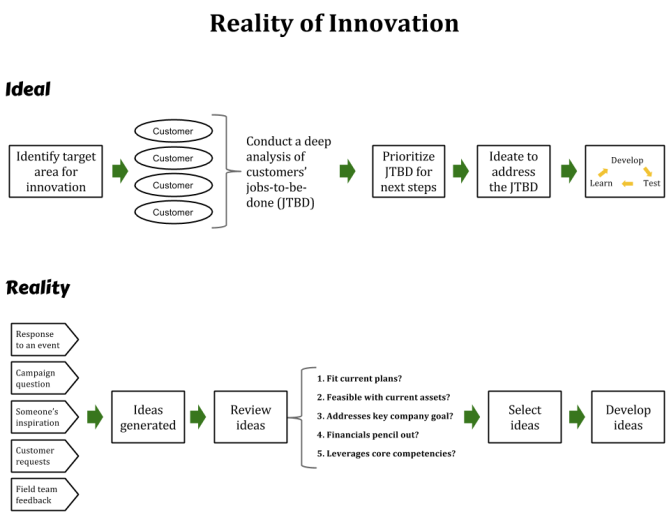










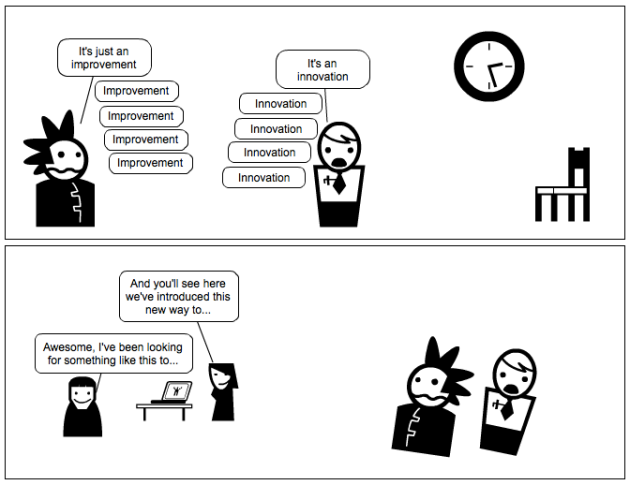

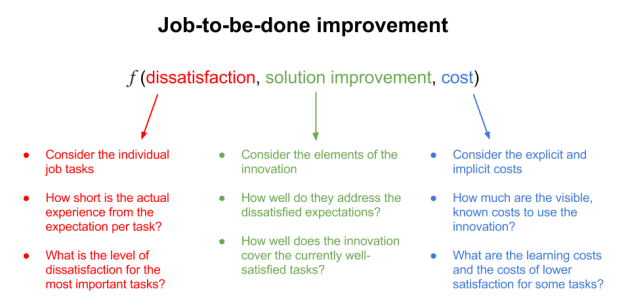
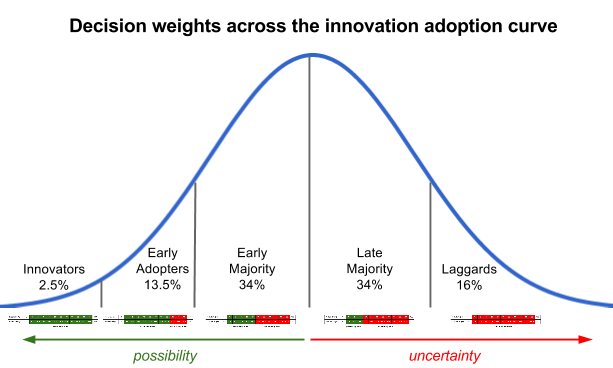


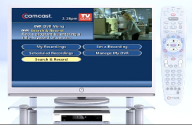






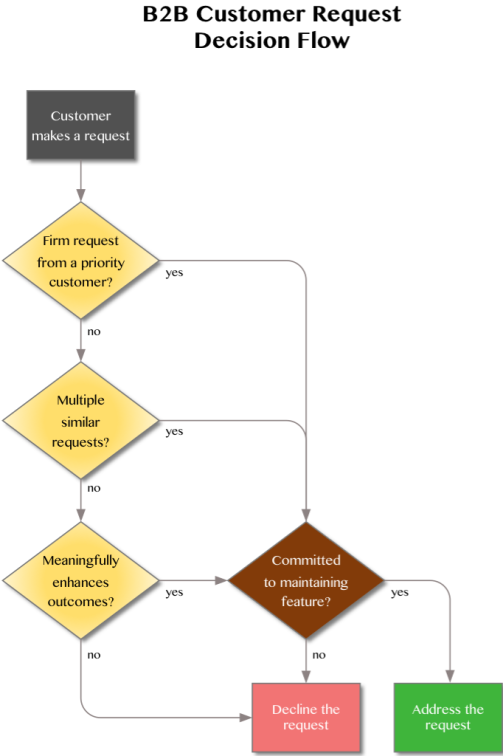

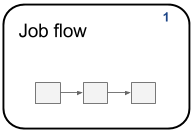

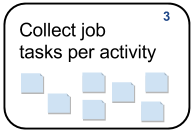
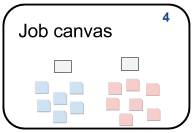
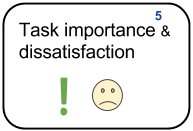
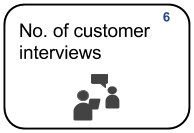
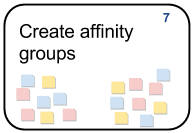
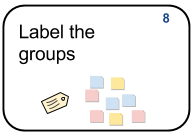
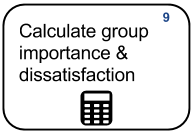


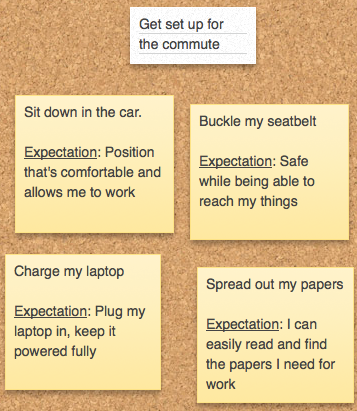


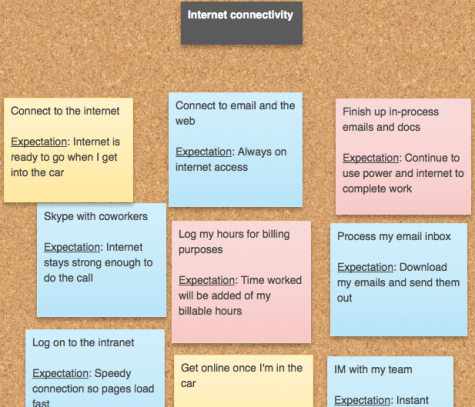
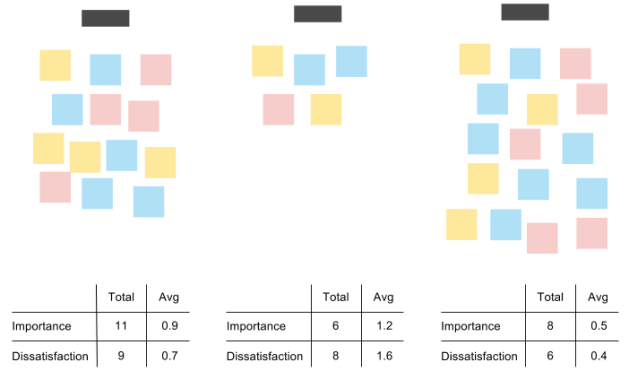

The Conversation